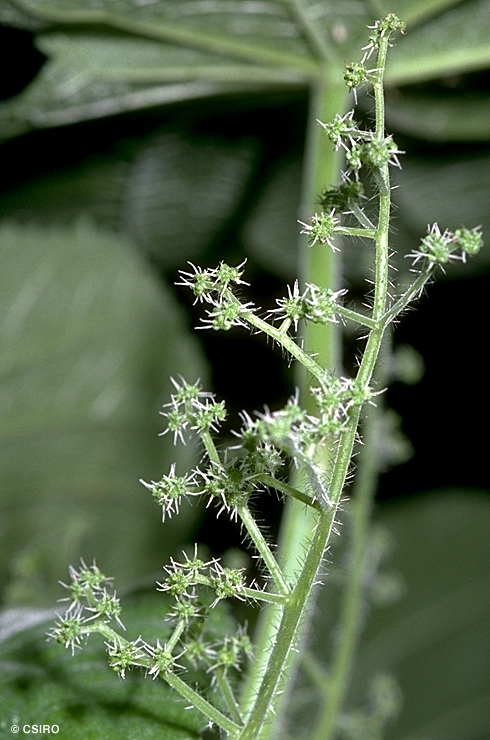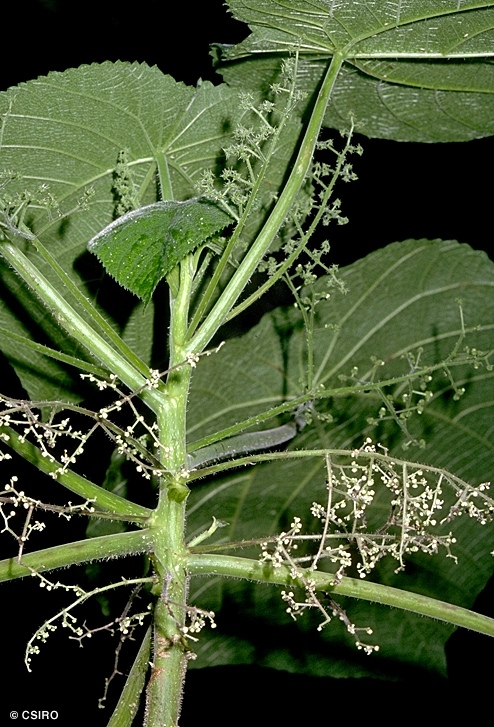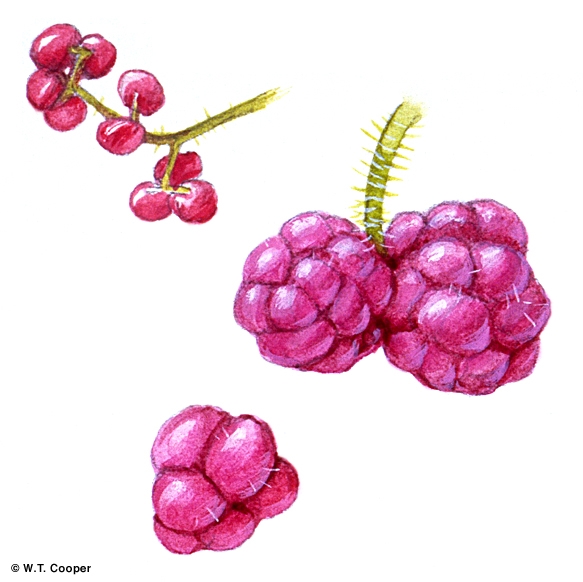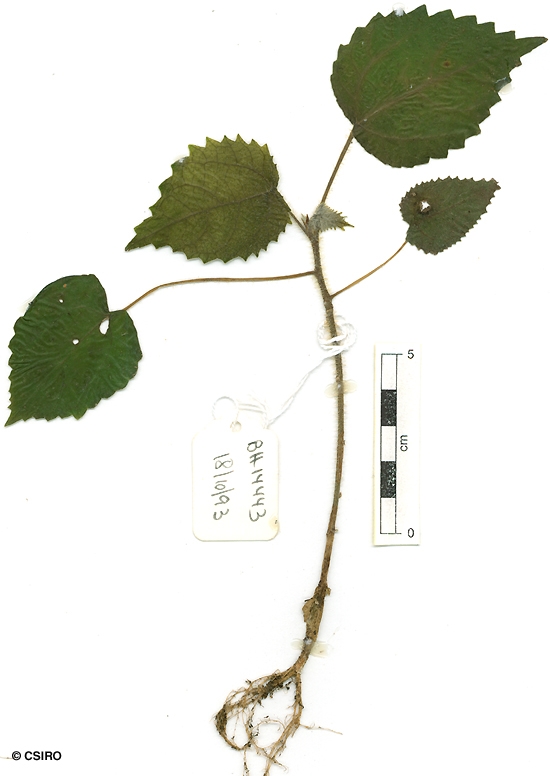Australian Tropical Rainforest Plants - Online edition
Dendrocnide moroides (Wedd.) Chew








Chew, W.L. (1965) The Gardens' Bulletin Singapore 21 : 204.
Stinging Bush; Stinger; Stinger, Gympie; Stinger, Mulberry-leaved; Gympie; Gympi Gympi; Mulberry-leaved Stinger; Gympie Stinger
Usually flowers and fruits as a shrub 1-3 m tall.
Twigs, petioles and both the upper and lower surfaces of the leaf blade clothed in stinging hairs which inflict long-lasting pain. Stipules caducous, about 20 x 5 mm, wedged between the petiole and the twig or stem, +/- sheathing the terminal bud. Petioles long, about as long as the leaf blade and attached to the leaf blade so as to be peltate. Leaf blades about 12-22 x 11-18 cm. Lateral and reticulate veins raised on the upper surface of the leaf blade and the upper surface of the leaf blade arched between the veins.
Infructescence up to 15 cm long consisting of a number of +/- globular heads arranged in panicles. Nuts or achenes resemble small seeds and are surrounded by the fleshy, watery, swollen receptacles or pedicels. Nut or achene about 2 mm long, the outer surface minutely warty. Style moribund but persistent at the apex of the fruit.
Cotyledons +/- orbicular, about 3-5 mm diam. First pair of leaves alternate and clothed in stinging hairs, margin with a few teeth. At the tenth leaf stage: all parts clothed in stinging hairs, leaf base cordate, often peltate, petiole long, often almost as long as the leaf blade, stipules about 5-8 mm long, 2-awned at the apex. Seed germination time 40 to 92 days.
All parts of this species inflict a painful sting which can last for months. If someone receives a significant sting over a wide area of a limb, as a result of being hit hard by the plant, little or no sleep will be obtained the first night following the sting. Major stings cause the affected tissue to exude lymph and pains are experienced in lymph glands in the armpit or groin. Working among plants and disturbing them cause fits of sneezing and copious production of mucous from the nasal membrane.
Food plant for the larval stages of the White Nymph Butterfly. Common & Waterhouse (1981).





